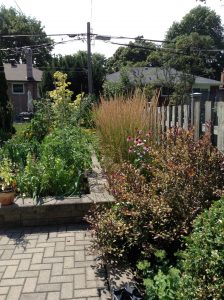
I want to replace my 5 Karl forester grasses with something about the same height that will not require as much maintenance. As I’m getting older I’m looking for something that will require less work.
The area is 3 ft, wide, faces west so it gets a lot of sun. It is also next to my raised vegetable garden so I often have to step in there to do some work. I also find that it is hard to weed in there with the spread of the grasses. I presume the soul is loam and I guess the condition of the soil would be in the middle of wet and dry.
Thank you for your help.
If you want a similar height 4ft to 6ft, you should consider some of the narrow evergreens such as various Junipers, Yews or Hinoki Falsecypress. Many varieties are columnar and require little pruning. The Nova Japanese Yew for example grows to 6′ x 3′ wide and likes a thick mulch which would also keep weeds down. However yews are toxic if ingested so may not be a solution if there are small children or animals around. Even the ubiquitous privet may be a solution. It can be grown as a small tree rather than closely clipped and has fragrant flowers if not frequently pruned.
There are a number of tallish, sun loving, flowering plants you could try such as Baptisia, Verbena, Liatris, Monarda, Salvia, and Agastache to name a few that are in the 3′ – 4′ range depending on the variety chosen. Some slightly lower growing plants could be added in front such as Amsonia or Achillea (Yarrow). Many of these also attract pollinators and other beneficial insects, an added advantage since they would border your vegetable bed. All of these are considered to be relatively low maintenance though cleanup is recommended in the spring and/or fall.
If you live in the GTA, I would recommend you visit the Toronto Botanical garden to see some of these plants growing. Seeing them on site can give you a better idea of their growth pattern and if they tend to be “floppers”. A simple metal plant support would hold them back and also allow a space to access the raised bed.

